iPhone Photos Using Space Even After Deleting Them? 8 Fixes
Every time it appears, you probably rush to clear out your storage, which photos are a large part of. However, sometimes, your iPhone may still show photos taking up a considerable amount of space even after clearing them out.
As frustrating as this sounds, there are several ways to tackle this problem. So, let's run through each of them.
1. Check the Recently Deleted Folder
A common reason for this issue revolves around the Recently Deleted album in the Photos app. This album allows you to recover deleted photos and videos for up to 30 days after deleting them. Like the Recycle Bin on your computer, it acts as a temporary safety net in case you change your mind.
This means that deleted data still exists on your phone—and is synced to iCloud—for some time, despite you having deleted it. People commonly forget to clear this album out since the folder is buried far down in the Photos app.
Thus, the first step to take if the Photos section of your iCloud storage still uses a lot of space is to delete the pictures in Recently Deleted permanently. Make sure you back up the photos to another location before doing this, in case you want them back in the future.

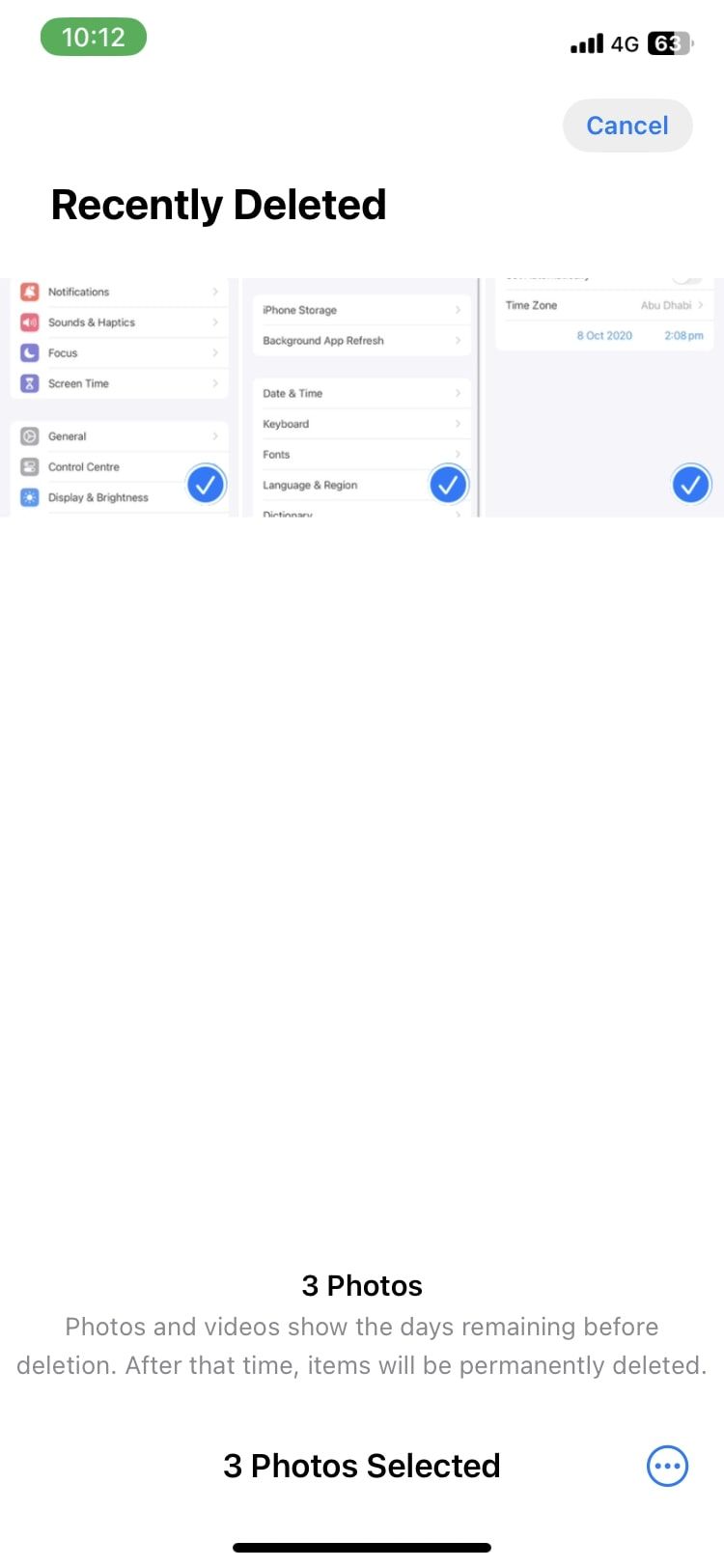

If the problem isn't fixed after clearing out this folder, the rest of the below tips will lead you to a fix.
2. Restart Your iPhone
Rebooting the system is a conventional fix to numerous bugs and errors. After you've removed a huge chunk of media from your storage, it's important to restart your iPhone. This will hopefully clear out any temporary hiccups causing your available storage to show incorrectly.
3. Update to the Latest iOS Software
More often than not, there may be a minor bug in the current version of iOS you're using that's causing the problem. Apple usually fixes this in the next version of iOS, so make sure you have updated your iPhone to the latest iOS. To update your software, follow these steps:
Open Settings and go to General. Tap on Software Update. If a new version is available, tap on Download and Install to begin.


4. Modify the Date and Time to Reveal Old Photos
The exact reasoning behind this fix isn't clear, but it often happens that media you deleted in the past returns as hidden files on your device. You won't know they exist, and you can't see them in the Recents album either.
This method provides an effective workaround to solve this problem and regain your storage. Here's what you need to do:
Open Settings and select General. Select the Date & Time option. Set Automatically will likely be enabled. If it is, turn the toggle off. You can then manually change the date and time using the fields below. Select any date and time that's at least a year in the past. After that, open the Photos app and check all your albums, including Recents and Recently Deleted. Select everything that has reappeared in your albums and delete them from your phone. If you don't see anything, try going back another year or two and check again.
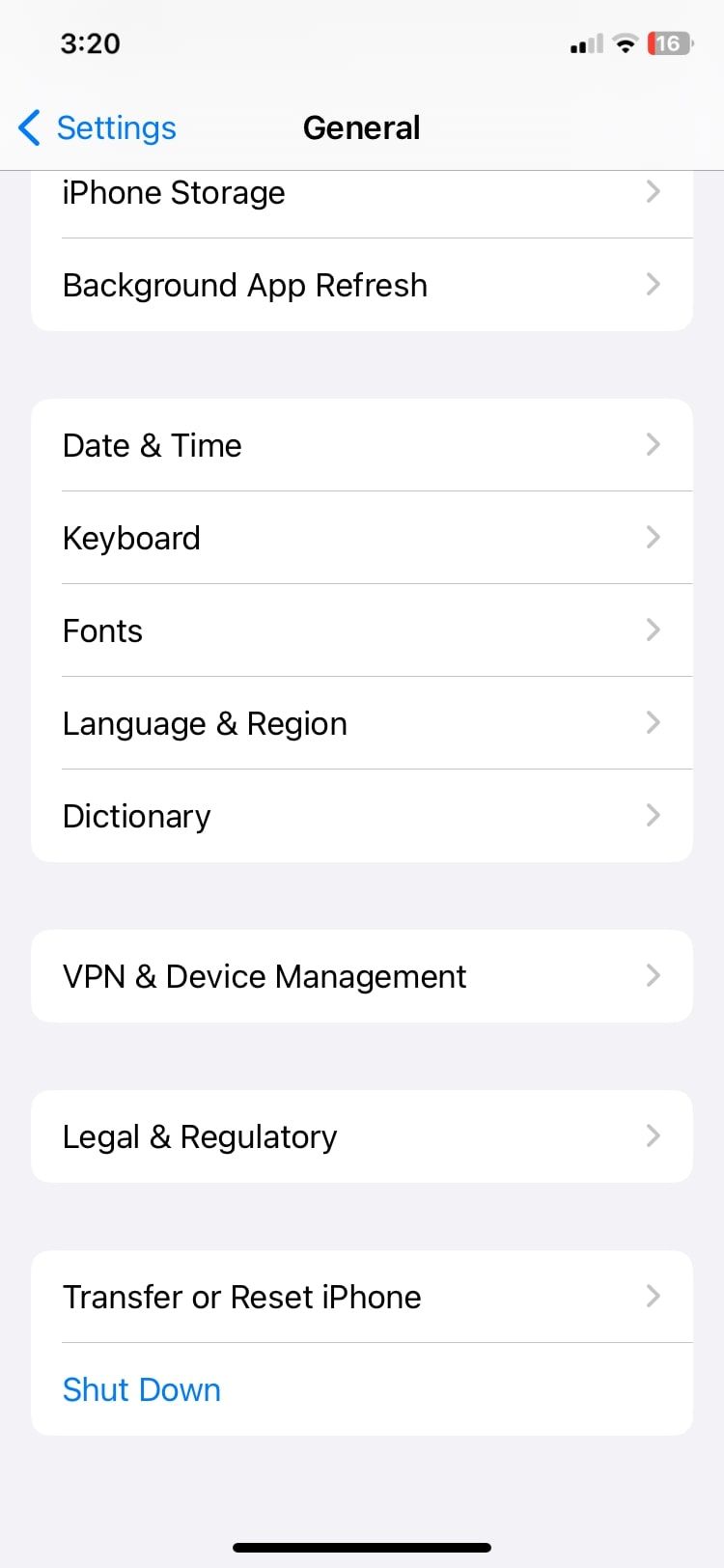
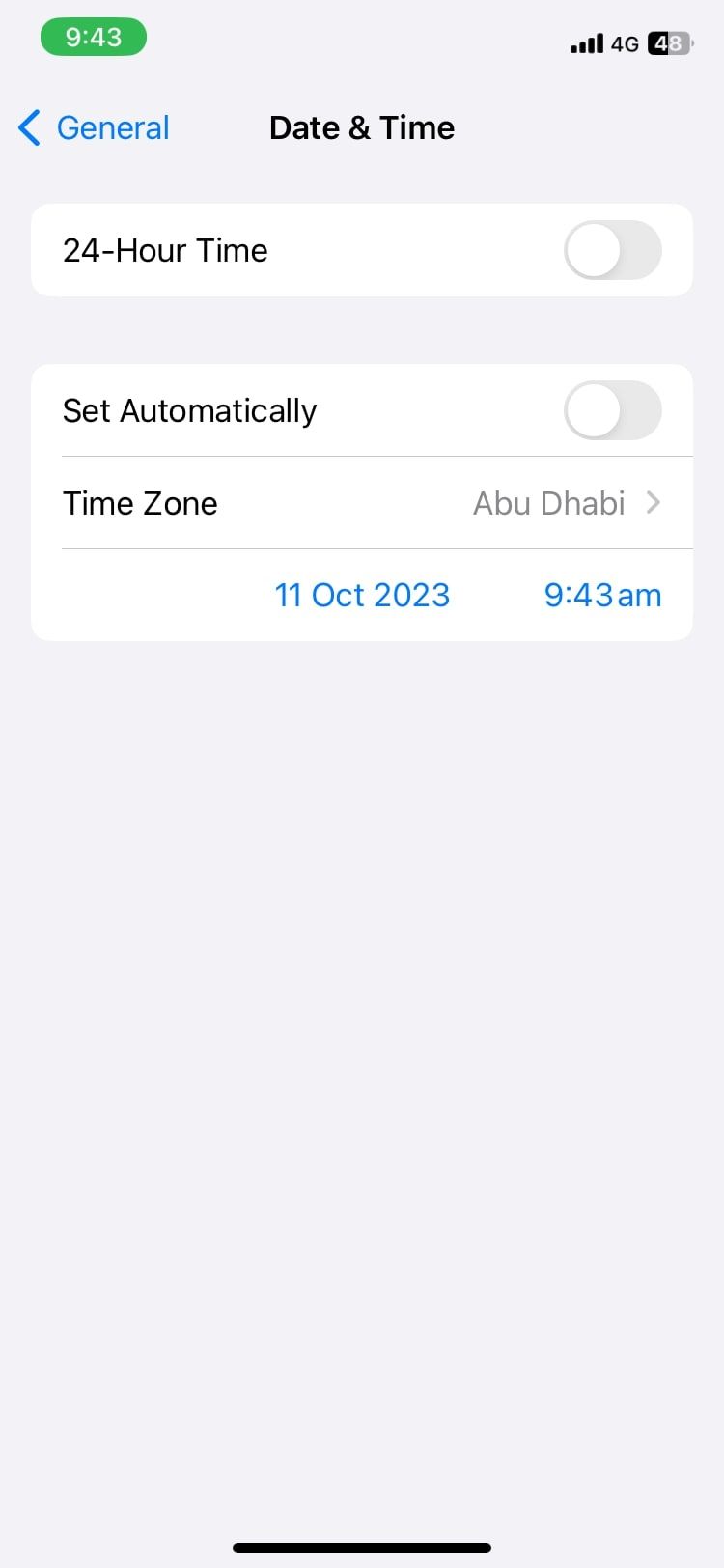
Deleting these "ghost files" that reappear should help free up that extra space on your iPhone (and even iCloud). Don't forget to set the time option back to automatic when you're done!
5. Disable iCloud Sync (After Completing a Backup)
iCloud Photos allows you to upload your iPhone's pictures to iCloud automatically. While this is convenient and a good way to protect your photos, it can also lead to your photos taking up too much space in iCloud.
As a temporary adjustment to fix the issue of Photos taking up phantom space, you can thus disable iCloud Photos for a time. This will prevent your photos from syncing and taking up more space, hopefully clearing out the problem.
You should back up your iPhone (locally to a computer if you don't have enough iCloud space) before doing this to avoid losing any photos in the process. Then, to turn off iCloud Photos, follow these steps:
Open Settings and select your Apple ID profile at the top. Go to iCloud and choose Photos. Turn off the toggle next to Sync this iPhone.


6. Optimize iPhone Photos for Storage
If photos are taking up too much space on your iPhone's storage all the time, the optimization option is handy. This has your iPhone decrease the resolution of media saved locally in Photos but retains a full-resolution copy in iCloud. There, you will have to toggle on iCloud Photos for this fix, unlike the previous one.
This helps you save storage while not deleting your original images. Once you've enabled iCloud Photos, you can follow these steps to turn on photo optimization:
Open Settings on your iPhone. In the Settings menu, scroll down and tap on Photos. Make sure the Optimize iPhone Storage option is selected.

7. Factory Reset Your iPhone
If you've tried all the above steps and your storage is still taken up by photos that don't exist, you should next opt for a full iPhone reset. This is a drastic measure, but it will hopefully clear out any persistent issues causing the storage glitch.
A factory reset will erase everything on your iPhone. So, ensure you've backed up all the data on your device before you proceed.
To factory reset your iPhone, follow these steps:
Go to Settings > General. Scroll down until you find Transfer or Reset iPhone and tap it. Tap Reset. From your list of options, tap on Erase All Content and Settings. Confirm your choice, and your iPhone will return to factory defaults the next time it reboots.
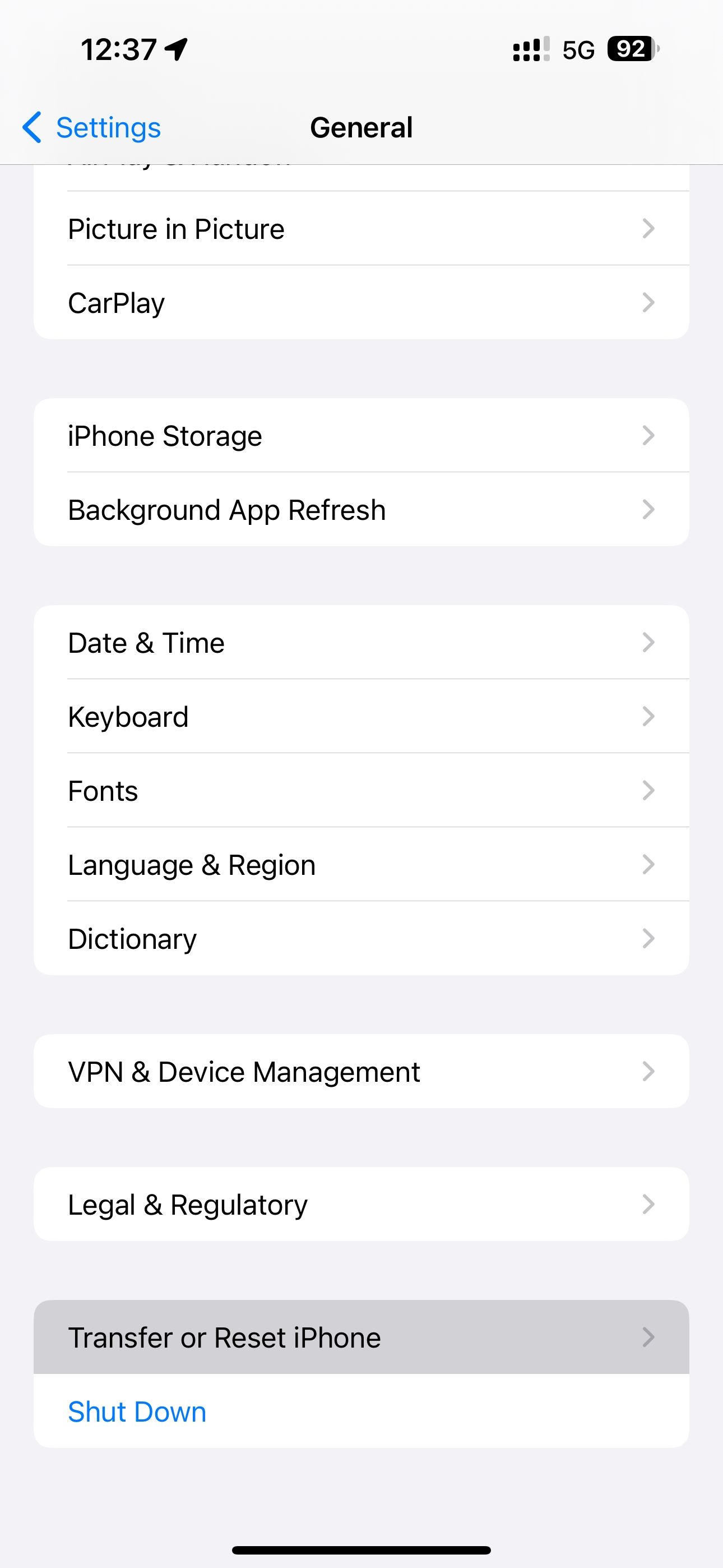
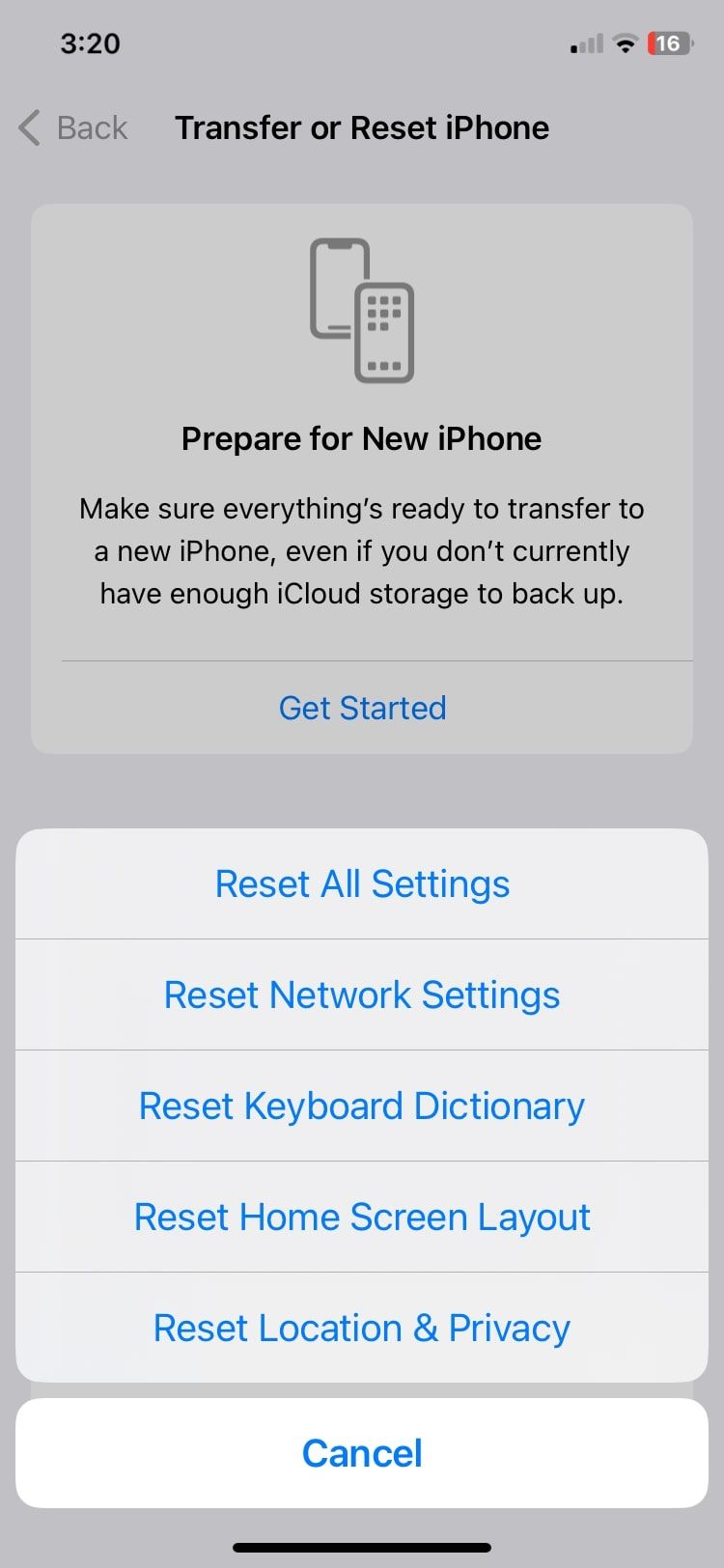
8. Contact Apple Support
You need to get in touch with an expert when all else fails. If the problem persists even after a factory reset, then it's likely severe, and you should get professional support from Apple.
You can do this online through Apple Support or visit your nearest Apple Store to talk with experts. A valid warranty will likely help your case in case of a major issue.
How to Better Manage iPhone Storage in the Future
While this error was hopefully a one-time problem for you, there's a chance it could happen in the future. It's better to maintain your iPhone storage ahead of time to reduce the impact of such an issue, so you should consider ways to avoid filling up your storage.
Some methods you can employ to manage both your iCloud and local storage on a long-term basis include:
定期删除未使用的应用程序。升级您的 iCloud 存储计划以获得更多空间。 删除旧消息和不重要的对话。 定期清除照片中最近删除的内容。卸载占用大量存储空间的应用程序。 如果您不使用 iCloud 照片,请将其禁用 - 考虑将照片备份到其他云服务。您的 iPhone 存储空间现在可以呼吸了
很多人都经历过这个 iPhone 和 iCloud 存储错误,这绝对是一种痛苦。幸运的是,有一些方法可以解决这个问题。希望这里介绍的方法可以让您的照片存储使用恢复正常。
通过提前保持存储空间畅通,您可以减少此问题再次发生时的影响。
The above is the detailed content of iPhone Photos Using Space Even After Deleting Them? 8 Fixes. For more information, please follow other related articles on the PHP Chinese website!

Hot AI Tools

Undresser.AI Undress
AI-powered app for creating realistic nude photos

AI Clothes Remover
Online AI tool for removing clothes from photos.

Undress AI Tool
Undress images for free

Clothoff.io
AI clothes remover

Video Face Swap
Swap faces in any video effortlessly with our completely free AI face swap tool!

Hot Article

Hot Tools

Notepad++7.3.1
Easy-to-use and free code editor

SublimeText3 Chinese version
Chinese version, very easy to use

Zend Studio 13.0.1
Powerful PHP integrated development environment

Dreamweaver CS6
Visual web development tools

SublimeText3 Mac version
God-level code editing software (SublimeText3)

Hot Topics
 1663
1663
 14
14
 1419
1419
 52
52
 1313
1313
 25
25
 1263
1263
 29
29
 1236
1236
 24
24
 Fix your Mac running slow after update to Sequoia
Apr 14, 2025 am 09:30 AM
Fix your Mac running slow after update to Sequoia
Apr 14, 2025 am 09:30 AM
After upgrading to the latest macOS, does the Mac run slower? Don't worry, you are not alone! This article will share my experience in solving slow Mac running problems after upgrading to macOS Sequoia. After the upgrade, I can’t wait to experience new features such as recording and transcription of voice notes and improved trail map planning capabilities. But after installation, my Mac started running slowly. Causes and solutions for slow Mac running after macOS update Here is my summary of my experience, I hope it can help you solve the problem of slow Mac running after macOS Sequoia update: Cause of the problem Solution Performance issues Using Novabe
 How to make a video into a live photo on Mac and iPhone: Detailed steps
Apr 11, 2025 am 10:59 AM
How to make a video into a live photo on Mac and iPhone: Detailed steps
Apr 11, 2025 am 10:59 AM
This guide explains how to convert between Live Photos, videos, and GIFs on iPhones and Macs. Modern iPhones excel at image processing, but managing different media formats can be tricky. This tutorial provides solutions for various conversions, al
 How to reduce WindowServer Mac CPU usage
Apr 16, 2025 pm 12:07 PM
How to reduce WindowServer Mac CPU usage
Apr 16, 2025 pm 12:07 PM
macOS WindowServer: Understanding High CPU Usage and Solutions Have you noticed WindowServer consuming significant CPU resources on your Mac? This process is crucial for your Mac's graphical interface, rendering everything you see on screen. High C
 Mac Disk Utility: How to Repair Disk with First Aid? How to Recover It?
Apr 13, 2025 am 11:49 AM
Mac Disk Utility: How to Repair Disk with First Aid? How to Recover It?
Apr 13, 2025 am 11:49 AM
You might need to repair your Mac disk if your computer won’t start up, apps keep freezing, you can’t open certain documents, or the performance has slowed to a halt. Luckily, Apple includes a handy tool you can use to
 How to type hashtag on Mac
Apr 13, 2025 am 09:43 AM
How to type hashtag on Mac
Apr 13, 2025 am 09:43 AM
You can’t really use the internet nowadays without encountering the hashtag symbol that looks like this — #. Popularized on a global scale by Twitter as a way to define common tweet themes and later adopted by Instagram and other apps to c
 How to delete files on Mac
Apr 15, 2025 am 10:22 AM
How to delete files on Mac
Apr 15, 2025 am 10:22 AM
Managing Mac storage: A comprehensive guide to deleting files Daily Mac usage involves installing apps, creating files, and downloading data. However, even high-end Macs have limited storage. This guide provides various methods for deleting unneces
 Is Google Chrome Not Working on Mac? Why Are Websites Not Loading?
Apr 12, 2025 am 11:36 AM
Is Google Chrome Not Working on Mac? Why Are Websites Not Loading?
Apr 12, 2025 am 11:36 AM
With a market share of over 65.7%, Google Chrome is the biggest web browser in the world. You can use it if you use other operating systems like Windows and Android, but many Mac users also prefer Chrome over Safari. Mo
 How to connect bluetooth headphones to Mac?
Apr 12, 2025 pm 12:38 PM
How to connect bluetooth headphones to Mac?
Apr 12, 2025 pm 12:38 PM
From the dawn of time to just about a few years ago, all of us sported a pair of wired headphones and were convinced that this is simply how it will be done forever. After all, they are the easiest technology around: just plug them in, put them




